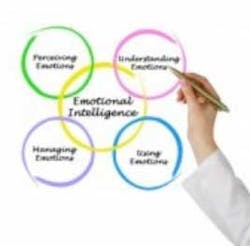The changing landscape of the dental hygiene profession
The quality of relationships within an organization significantly impacts productivity or the quality of the product or service offered. Health care organizations and dental and dental hygiene offices are no exception. In one study of the effects of nursing structure and processes on selected patient outcomes, it was found that the relationships between nursing staff from different units was a strong predictor of patient satisfaction.(7)
Evidence also exists for the value of relationships in the delivery of patient care.(8) Performance matters more than ever, but is no longer measured on the basis of clinical skill alone. Excellence in supporting staff involves the ability to provide an overall positive health care experience for patients and their families.(9)
The objective of one study was to determine the degree of correlation between emotional intelligence of dental students, patient satisfaction and related factors.(10) There was a statistically significant relationship between general emotional intelligence score of the students and patient satisfaction. Patients of the students with high general emotional intelligence scores were significantly more satisfied with treatment than patients of students with low EI.
So, as we move from one phase of our lives and careers to others, are we able to cope with the changing landscape of our world? Look to mentors and your professional association to empower, support, and develop your career. In the words of Shakespeare, the world is your oyster!
References
1. http://danielgoleman.info/.
2. Shine a Light on Your Business, For Self and Business Improving. goldspink88.
3. Kumar S. A Seminar on “Concept of Emotional Intelligence”.
4. Immunoglobulin A Review. 2011. http://www.invivogen.com/review-iga.
5. Cousins N. Anatomy of an Illness as Perceived by the Patient: Reflections on Healing and Regeneration. W. W. Norton and Company, Inc., New York, NY, 1979.
6. Sigmund Freud -1953- introduction to psycho-analysis-classic by Freud himself. Originally published in 1920. Freud. Sigmund: Introduction to Psychoanalysis, PREFACE BY G. STANLEY HALL PRESIDENT, 1920.
7. Sovie, M.D. & Jawad, A.F. (2001). Hospital restructuring and its impact on outcomes: Nursing staff regulations are premature. Journal of Nursing Administration, 31(12), 588-600.
8. S.S. Wadhwa : Customer Satisfaction and Health Care Delivery Systems: Commentary with Australian Bias. The Internet Journal of Health. 2002 Volume 3 Number 1. DOI: 10.5580/47a - See more at: http://www.ispub.com/journal/the-internet-journal-of-health/volume-3-number-1/customer-satisfaction-and-health-care-delivery-systems-commentary-with-australian-bias.html#sthash.K3D9kOmb.dpuf.
9. Alderman, M.C. (2001). Nursing in the new millennium: Challenges and opportunities. Dermatology Nursing, 13(1), 44-45,49-50.
10. Azimi S, Asghar Nejad Farid AA, Kharazi Fard MJ, Khoei N. Emotional intelligence of dental students and patient satisfaction. Eur J Dent Educ. 2010 Aug;14(3):129-32. doi: 10.1111/j.1600-0579.2009.00596.x.
Additional Reading
1. Goleman D. Working with emotional intelligence (1993). http://books.google.com/books/about/Working_With_Emotional_Intelligence_b.html?id=yE1gHqW_T_0C.
2. Sasanpour m, Khodabakhshi M, and Nooryan K. The Relationship between Emotional Intelligence, Happiness and Mental Health in Students of Medical Science of Isfahan University. http://www.iomcworld.com/ijcrimph/files/v04-n09-01.pdf.
3. Lopes, P.N., Brackett, M.A., Nezlek, J.B., Schütz, A., Sellin, I., & Salovey, P. (2004). Emotional intelligence and social interaction. Personality and Social Psychological Bulletin, 30, 1018-1034.






